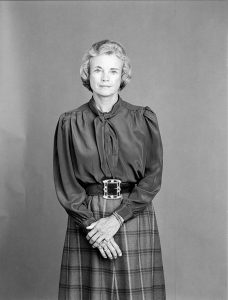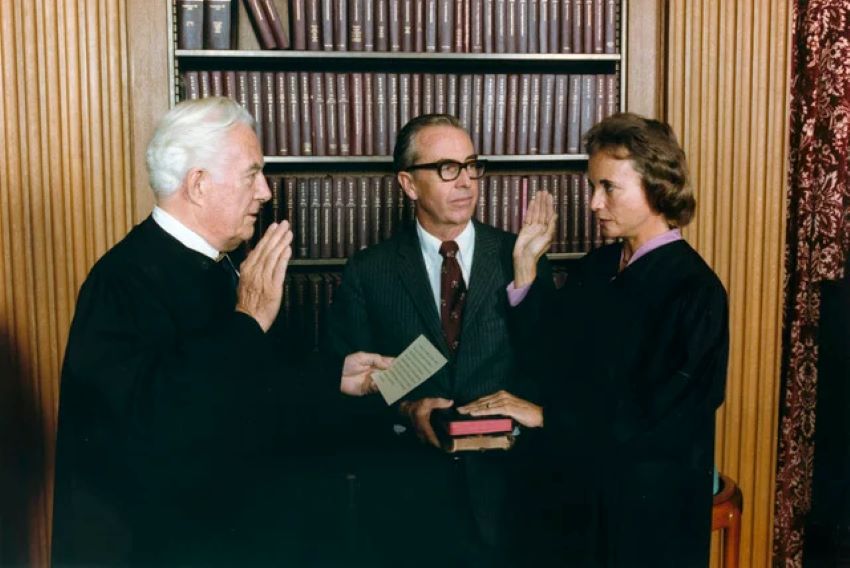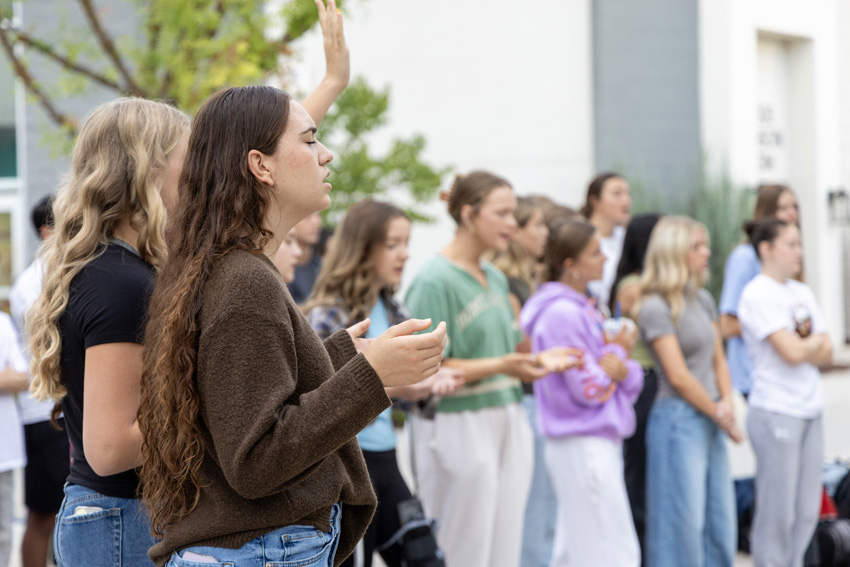With spring blooms Women’s History Month celebrated in March. Several countries observed the first International Women’s Day as a holiday on March 8, 1911 with the United Nations adopting it in 1975. Women’s History Month started at the local level in Santa Rosa, California. Our nation sets aside this day and now month to acknowledge and lift up the achievements of women through the decades. This year’s theme is “Women Who Advocate for Equity, Diversity and Inclusion.” Our Feather series will help highlight some of the women from diverse backgrounds who have shaped history and help illuminate the future for this generation.
Sandra Day O’Connor, the first female justice of the United States Supreme Court, was one of the most influential American women of the 1980s and 1990s. She was a key figure in monumental Supreme Court cases, taking on civil rights, affirmative action, and abortion.
Born in El Paso, Texas, in 1930, O’Connor grew up on her family’s cattle ranch in southeastern Arizona. While she was growing up, a legal dispute over the ranch motivated her interest. She enrolled at Stanford University in 1950, where she continued studying law. She graduated two years later with her law degree and ranked near the top of the class.
Despite her academic achievements, O’Connor struggled to find work at the beginning of her career. She went to multiple firms asking for an interview, yet all turned her down. The law firms reasoned that they did not hire women. Finally, she approached the county attorney for San Mateo, California, however, there was no money left in the budget for O’Connor. Despite this, she offered to work for free until they could pay her.
In 1953, O’Connor moved to West Germany because her husband was drafted into the U.S. Army as a judge, and she was working as a civilian lawyer for the army. Upon returning to the United States in 1957, the couple settled in Phoenix, Arizona, and had three children in the next six years. O’Connor served as Assistant Attorney General for the state of Arizona in 1965. Then four years later she was appointed to the state senate and won reelection in 1970 and 1972. O’Connor made history the next year by becoming the first woman, from either party, to be elected as Senate majority leader.

August 19, 1981, President Ronald Reagan fulfilled his 1980 campaign promise to appoint the first woman to the Supreme Court. On September 21 of that same year, the United States Senate voted to approve O’Connor’s appointment to the Supreme Court. Then four days later, she was sworn in by Chief Justice Warren Burger.
O’Connor became known as pragmatic and moderate conservative, yet often voted with liberal judges in several cases, many including upholding abortion rights. She was regarded as a prominent justice due to her tendency to moderate the divided Supreme Court. During her time, she was noted for her impassive and researched opinions, which caused her to be more centrist as time went on. She sided with the conservative judges in cases such as Bush vs. Gore, which concluded that “Gun-Free School Zones” were unconstitutional and allowed school vouchers to be used at religious schools.
O’Connor would emphasize the importance of equal protection claims such as in Shaw vs. Reno in 1993. This would follow in another case which declared that district boundaries were unconstitutional as they were “unexplainable on grounds other than race” in Bush v. Vera. Her opinions in the court were most notable with the cases involving abortion rights of women.
On July 1, 2005, O’Connor announced her retirement from the Supreme Court and would be replaced by Samual Alito. She remained active with philanthropy and in court hearings as a visit judge. She announced in October 2018 that she had been diagnosed with dementia. She concluded that because of her growing condition, she would no longer be in the public eye. Sandra Day O’Connor passed away on December 1, 2023 at the age of 93.
Her legacy as the first woman to be a Supreme Court Justice proved that the country and court are well-served by women. She overcame gender barriers not only in the law workforce, but in the highest court in the United States.
To read more about Sandra Day O’Connor, visit the Sandra Day O’Connor Institute.
To read more from The Feather, visit Malala Yousazafi speaks up about women’s education and Black History Month Spotlight: Shirley Chisholm leads in politics.







